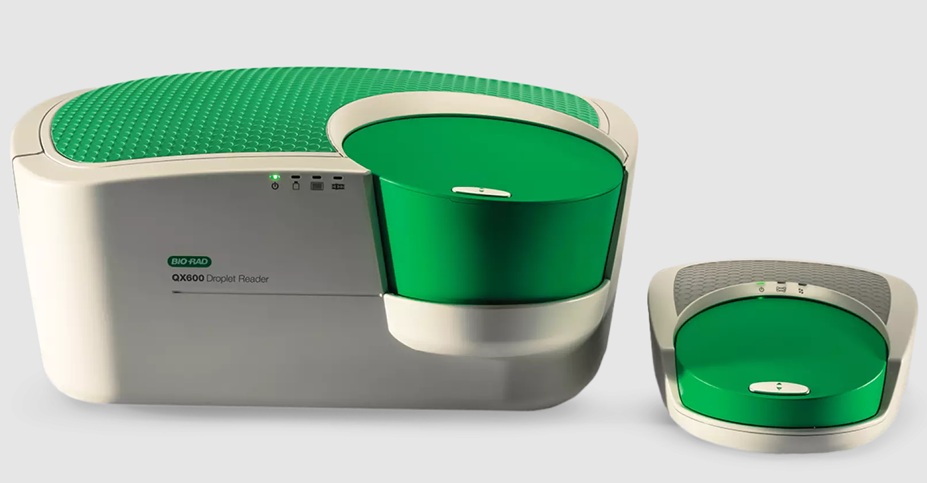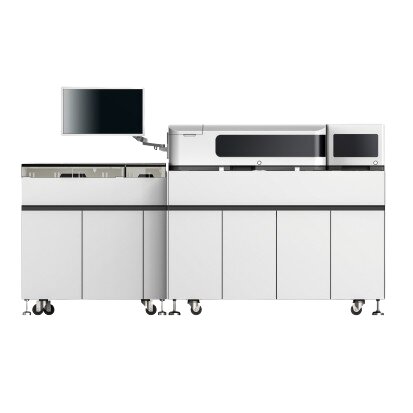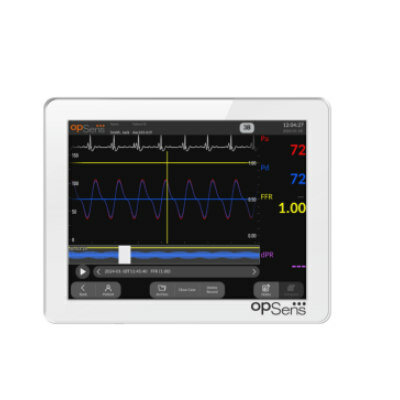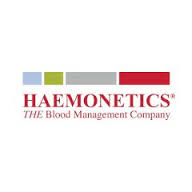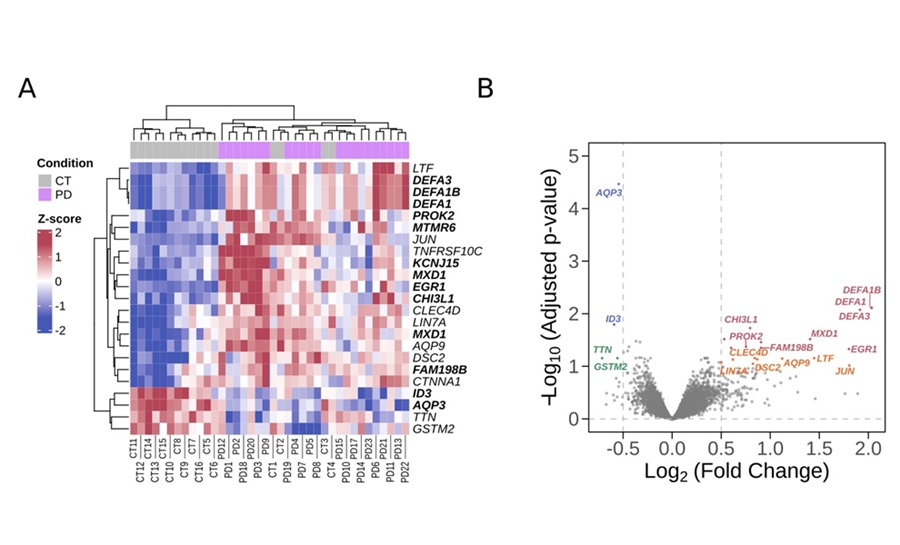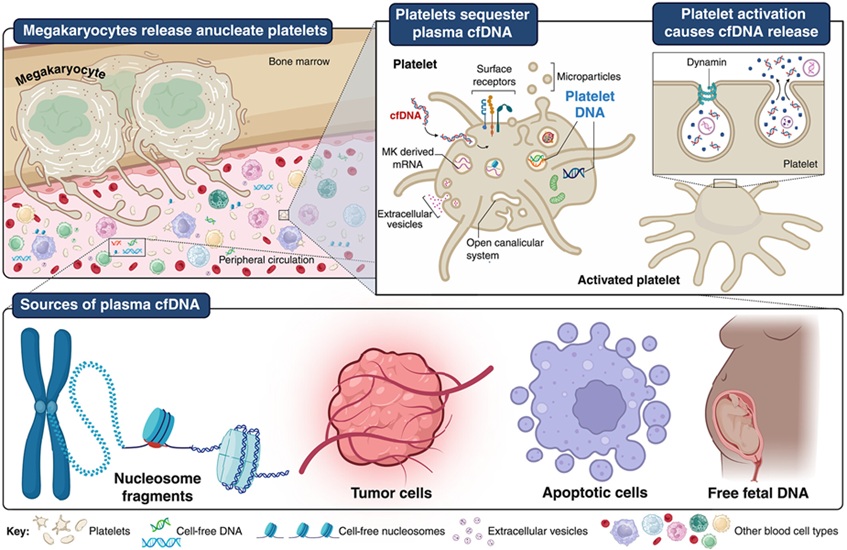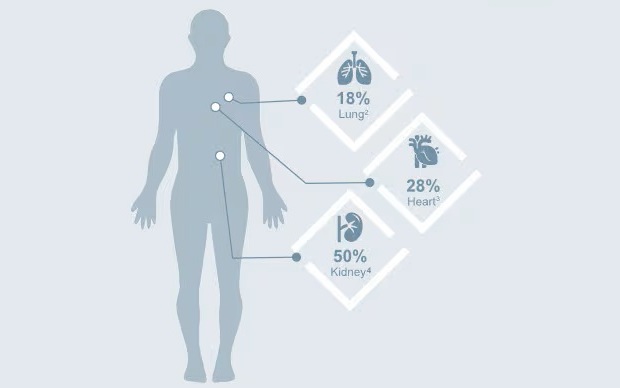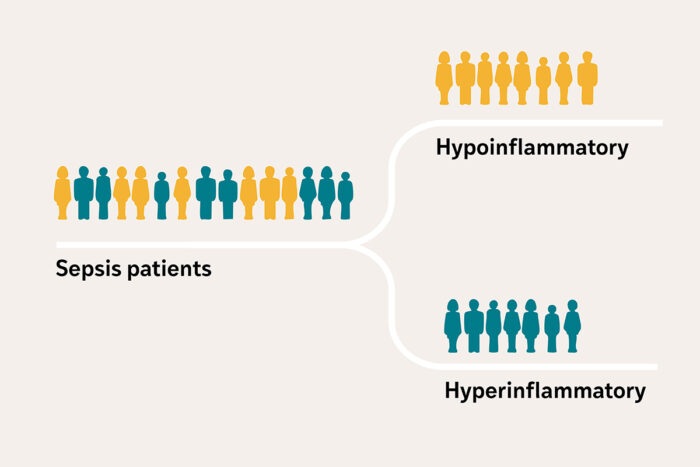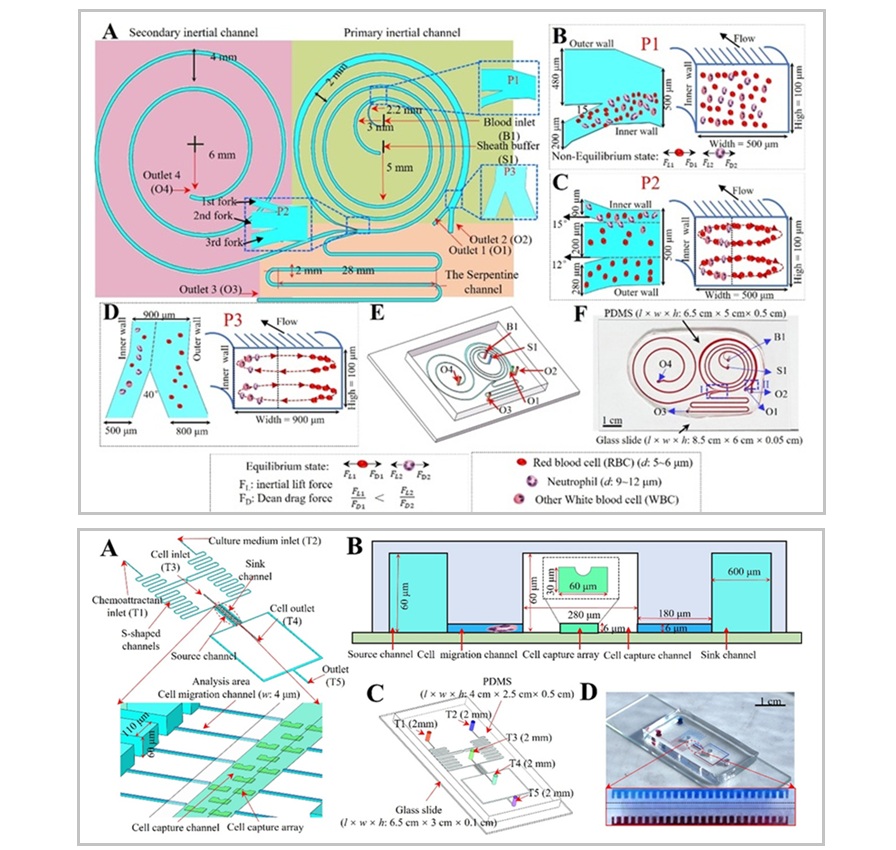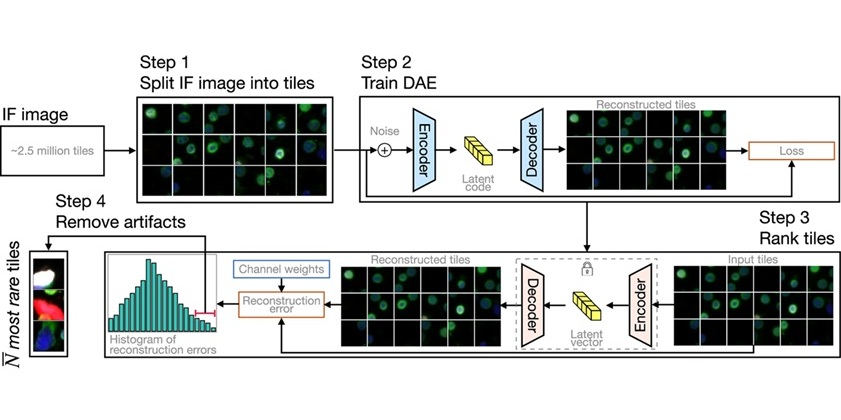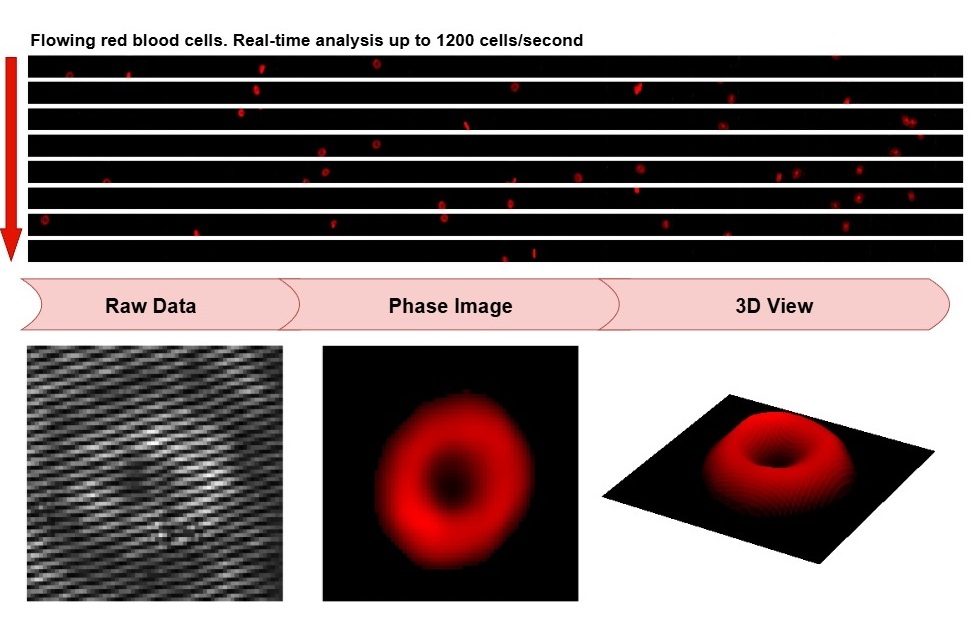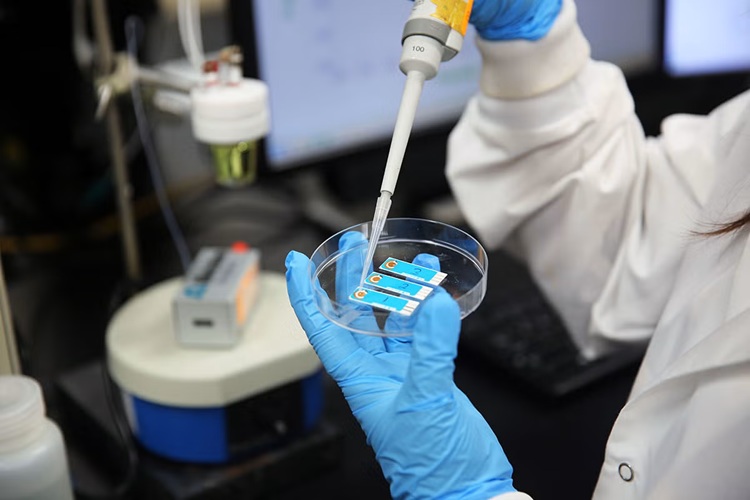Diabetic Biomarkers Concordance Compared in South African Blacks
|
By LabMedica International staff writers Posted on 28 Jun 2021 |
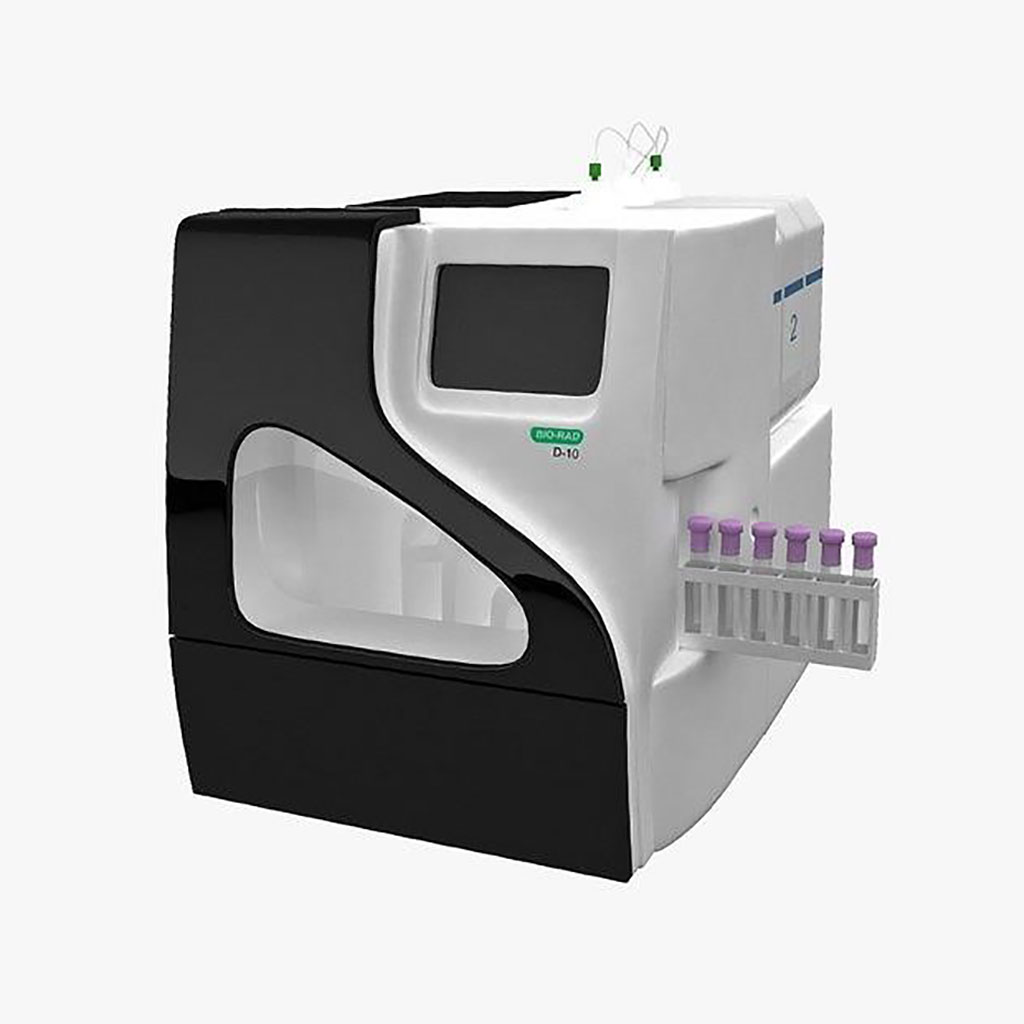
Image: The D-10 Hemoglobin Testing System provides comprehensive, automated hemoglobin testing in a compact footprint, combining HbA1c and HbA2/F/A1c testing on a single platform (Photo courtesy of Bio-Rad)
Sub-Saharan Africa is projected to experience a significant increase in the prevalence of diabetes mellitus by in the near future and accurate, comparable prevalence estimates will be essential to planning and monitoring by public health authorities.
Diagnosis based on glycated hemoglobin (HbA1c) is attractive because it provides an integrated assessment of glycemic status over the preceding three months and has low analytical variability, but the extent to which this single threshold may be adopted in all sub-Saharan African populations is questionable. Existing data suggest that in individuals of African descent, HbA1c may be higher for any given degree of glycaemia than in individuals of European descent.
A large international team of medical scientists led by those at the University of the Witwatersrand (Johannesburg, South Africa) included in a study 765 black individuals aged 40–70 years and with no history of diabetes. The team investigated concordance between hemoglobin A1c (HbA1c)-defined diabetes and fasting plasma glucose (FPG)-defined diabetes in a black South African population with a high prevalence of obesity.
Capillary blood samples were tested for hemoglobin at point of collection using the Haemocue Hb 201+analyser (Haemocue, Ängelholm, Sweden). Whole blood was analyzed for HbA1c using high-performance liquid chromatography on the Bio-Rad D-10 (Bio-Rad Laboratories, Hercules, CA, USA) with a reportable range of 3.8%–18.5%. Plasma was analyzed for glucose using colorimetric methods on the Randox Plus clinical chemistry analyzer (Randox, Crumlin, UK) with a range of 0.36–35 mmol/L. Serum insulin assays were performed on the Immulite 1000 chemistry analysis system (Siemens Healthineers, Erlangen, Germany), using a solid-phase, enzyme-labeled chemiluminescent immunometric assay (range 2–300 μIU/mL).
The investigators reported that the prevalence of HbA1c-defined diabetes was four times the prevalence of FPG-defined diabetes (17.5% versus 4.2%). Classification was discordant in 15.7% of participants, with 111 individuals (14.5%) having HbA1c-only diabetes. Median body mass index, waist and hip circumference, waist-to-hip ratio, subcutaneous adipose tissue and Homoeostatic Model Assessment of Insulin Resistance (HOMA-IR) in participants with HbA1c-only diabetes were similar to those in participants who were normoglycemic by both biomarkers and significantly lower than in participants with diabetes by both biomarkers. HOMA-IR and fat distribution explained additional HbA1c variance beyond glucose and age only in women.
The authors concluded that concordance was poor between HbA1c and FPG in diagnosis of diabetes in black South Africans, and participants with HbA1c-only diabetes phenotypically resembled normoglycemic participants. Further work is necessary to determine which of these parameters better predicts diabetes-related morbidities in this population and whether a population-specific HbA1c threshold is necessary. The study was published on June 17, 2021 in the journal BMJ OPEN.
Related Links:
University of the Witwatersrand
Haemocue
Bio-Rad Laboratories
Randox
Siemens Healthineers
Diagnosis based on glycated hemoglobin (HbA1c) is attractive because it provides an integrated assessment of glycemic status over the preceding three months and has low analytical variability, but the extent to which this single threshold may be adopted in all sub-Saharan African populations is questionable. Existing data suggest that in individuals of African descent, HbA1c may be higher for any given degree of glycaemia than in individuals of European descent.
A large international team of medical scientists led by those at the University of the Witwatersrand (Johannesburg, South Africa) included in a study 765 black individuals aged 40–70 years and with no history of diabetes. The team investigated concordance between hemoglobin A1c (HbA1c)-defined diabetes and fasting plasma glucose (FPG)-defined diabetes in a black South African population with a high prevalence of obesity.
Capillary blood samples were tested for hemoglobin at point of collection using the Haemocue Hb 201+analyser (Haemocue, Ängelholm, Sweden). Whole blood was analyzed for HbA1c using high-performance liquid chromatography on the Bio-Rad D-10 (Bio-Rad Laboratories, Hercules, CA, USA) with a reportable range of 3.8%–18.5%. Plasma was analyzed for glucose using colorimetric methods on the Randox Plus clinical chemistry analyzer (Randox, Crumlin, UK) with a range of 0.36–35 mmol/L. Serum insulin assays were performed on the Immulite 1000 chemistry analysis system (Siemens Healthineers, Erlangen, Germany), using a solid-phase, enzyme-labeled chemiluminescent immunometric assay (range 2–300 μIU/mL).
The investigators reported that the prevalence of HbA1c-defined diabetes was four times the prevalence of FPG-defined diabetes (17.5% versus 4.2%). Classification was discordant in 15.7% of participants, with 111 individuals (14.5%) having HbA1c-only diabetes. Median body mass index, waist and hip circumference, waist-to-hip ratio, subcutaneous adipose tissue and Homoeostatic Model Assessment of Insulin Resistance (HOMA-IR) in participants with HbA1c-only diabetes were similar to those in participants who were normoglycemic by both biomarkers and significantly lower than in participants with diabetes by both biomarkers. HOMA-IR and fat distribution explained additional HbA1c variance beyond glucose and age only in women.
The authors concluded that concordance was poor between HbA1c and FPG in diagnosis of diabetes in black South Africans, and participants with HbA1c-only diabetes phenotypically resembled normoglycemic participants. Further work is necessary to determine which of these parameters better predicts diabetes-related morbidities in this population and whether a population-specific HbA1c threshold is necessary. The study was published on June 17, 2021 in the journal BMJ OPEN.
Related Links:
University of the Witwatersrand
Haemocue
Bio-Rad Laboratories
Randox
Siemens Healthineers
Latest Clinical Chem. News
- VOCs Show Promise for Early Multi-Cancer Detection
- Portable Raman Spectroscopy Offers Cost-Effective Kidney Disease Diagnosis at POC
- Gold Nanoparticles to Improve Accuracy of Ovarian Cancer Diagnosis
- Simultaneous Cell Isolation Technology Improves Cancer Diagnostic Accuracy
- Simple Non-Invasive Hair-Based Test Could Speed ALS Diagnosis
- Paper Strip Saliva Test Detects Elevated Uric Acid Levels Without Blood Draws
- Prostate Cancer Markers Based on Chemical Make-Up of Calcifications to Speed Up Detection
- Breath Test Could Help Detect Blood Cancers
- ML-Powered Gas Sensors to Detect Pathogens and AMR at POC
- Saliva-Based Cancer Detection Technology Eliminates Need for Complex Sample Preparation
- Skin Swabs Could Detect Parkinson’s Years Before Symptoms Appear
- New Clinical Chemistry Analyzer Designed to Meet Growing Demands of Modern Labs

- New Reference Measurement Procedure Standardizes Nucleic Acid Amplification Test Results
- Pen-Like Tool Quickly and Non-Invasively Detects Opioids from Skin
- Simple Urine Test Could Detect Multiple Cancers at Early Stage
- Earwax Test Accurately Detects Parkinson’s by Identifying Odor Molecules
Channels
Molecular Diagnostics
view channel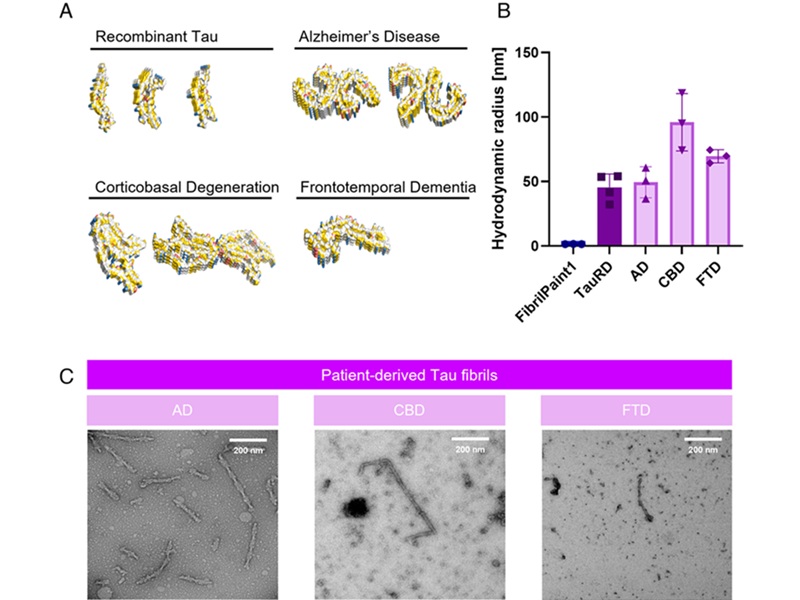
First Direct Measurement of Dementia-Linked Proteins to Enable Early Alzheimer’s Detection
The disease process in Alzheimer’s begins long before memory loss or cognitive decline becomes apparent. During this silent phase, misfolded proteins gradually form amyloid fibrils, which accumulate in... Read more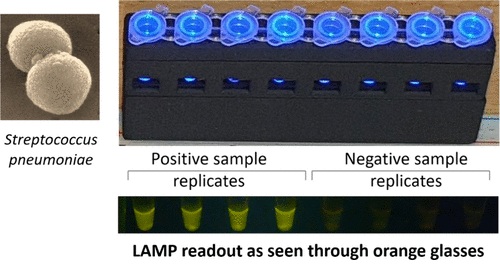
New Diagnostic Method Detects Pneumonia at POC in Low-Resource Settings
Pneumonia continues to be one of the leading causes of death in low- and middle-income countries, where limited access to advanced laboratory infrastructure hampers early and accurate diagnosis.... Read moreHematology
view channel
ADLM’s New Coagulation Testing Guidance to Improve Care for Patients on Blood Thinners
Direct oral anticoagulants (DOACs) are one of the most common types of blood thinners. Patients take them to prevent a host of complications that could arise from blood clotting, including stroke, deep... Read more
Viscoelastic Testing Could Improve Treatment of Maternal Hemorrhage
Postpartum hemorrhage, severe bleeding after childbirth, remains one of the leading causes of maternal mortality worldwide, yet many of these deaths are preventable. Standard care can be hindered by delays... Read more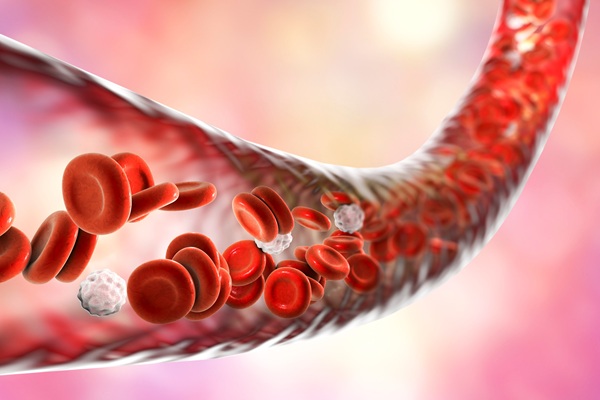
Pioneering Model Measures Radiation Exposure in Blood for Precise Cancer Treatments
Scientists have long focused on protecting organs near tumors during radiotherapy, but blood — a vital, circulating tissue — has largely been excluded from dose calculations. Each blood cell passing through... Read moreImmunology
view channel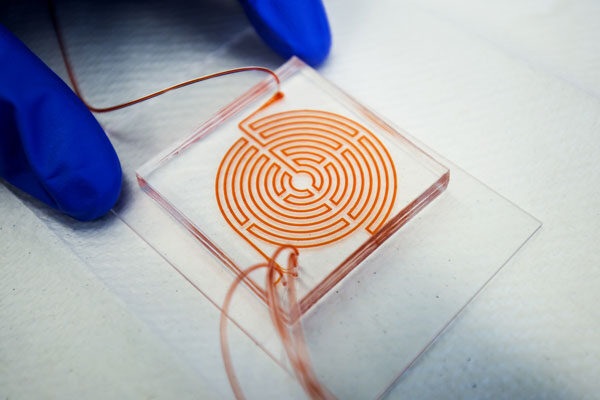
Chip Captures Cancer Cells from Blood to Help Select Right Breast Cancer Treatment
Ductal carcinoma in situ (DCIS) accounts for about a quarter of all breast cancer cases and generally carries a good prognosis. This non-invasive form of the disease may or may not become life-threatening.... Read more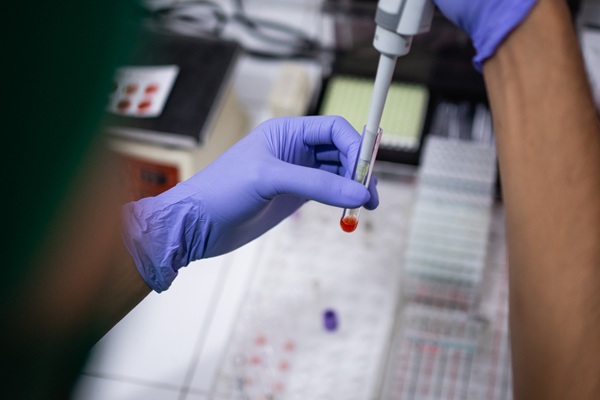
Blood-Based Liquid Biopsy Model Analyzes Immunotherapy Effectiveness
Immunotherapy has revolutionized cancer care by harnessing the immune system to fight tumors, yet predicting who will benefit remains a major challenge. Many patients undergo costly and taxing treatment... Read moreMicrobiology
view channel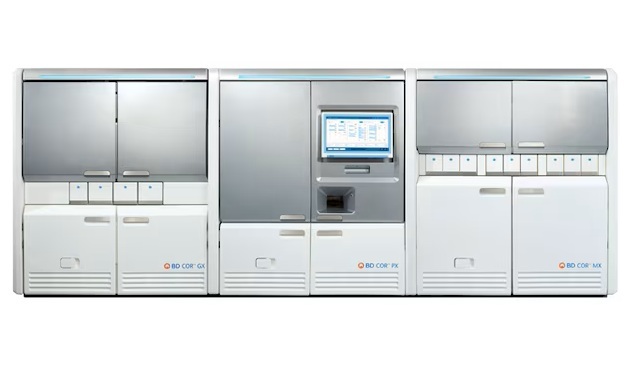
High-Throughput Enteric Panels Detect Multiple GI Bacterial Infections from Single Stool Swab Sample
Gastrointestinal (GI) infections are among the most common causes of illness worldwide, leading to over 1.7 million deaths annually and placing a heavy burden on healthcare systems. Conventional diagnostic... Read more
Fast Noninvasive Bedside Test Uses Sugar Fingerprint to Detect Fungal Infections
Candida bloodstream infections are a growing global health threat, causing an estimated 6 million cases and 3.8 million deaths annually. Hospitals are particularly vulnerable, as weakened patients after... Read morePathology
view channel
New Molecular Analysis Tool to Improve Disease Diagnosis
Accurately distinguishing between similar biomolecules such as proteins is vital for biomedical research and diagnostics, yet existing analytical tools often fail to detect subtle structural or compositional... Read more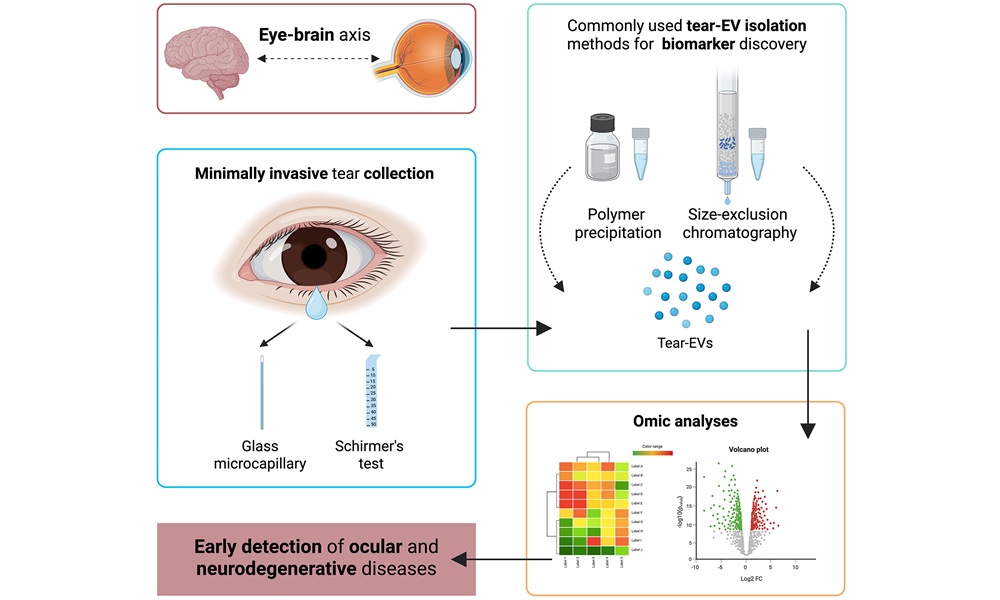
Tears Offer Noninvasive Alternative for Diagnosing Neurodegenerative Diseases
Diagnosing and monitoring eye and neurodegenerative diseases often requires invasive procedures to access ocular fluids. Ocular fluids like aqueous humor and vitreous humor contain valuable molecular information... Read moreTechnology
view channel
Portable Biosensor Diagnoses Psychiatric Disorders Using Saliva Samples
Early diagnosis of psychiatric disorders such as depression, schizophrenia, and bipolar disorder remains one of medicine’s most pressing challenges. Current diagnostic methods rely heavily on clinical... Read more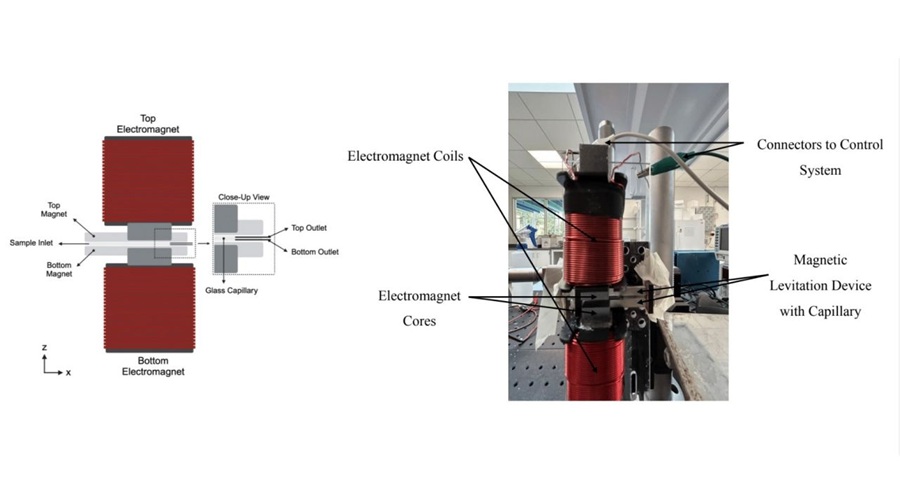
Cell-Sorting Device Uses Electromagnetic Levitation to Precisely Direct Cell Movement
Sorting different cell types—such as cancerous versus healthy or live versus dead cells—is a critical task in biology and medicine. However, conventional methods often require labeling, chemical exposure,... Read moreIndustry
view channel
Qiagen Acquires Single-Cell Omics Firm Parse Biosciences
QIAGEN (Venlo, Netherlands) has entered into a definitive agreement to fully acquire Parse Biosciences (Seattle, WA, USA), a provider of scalable, instrument-free solutions for single-cell research.... Read more
Puritan Medical Products Showcasing Innovation at AMP2025 in Boston
Puritan Medical Products (Guilford, ME, USA), the world’s most trusted manufacturer of swabs and specimen collection devices, is set to exhibit at AMP2025 in Boston, Massachusetts, from November 11–15.... Read more
Advanced Instruments Merged Under Nova Biomedical Name
Advanced Instruments (Norwood, MA, USA) and Nova Biomedical (Waltham, MA, USA) are now officially doing business under a single, unified brand. This transformation is expected to deliver greater value... Read more